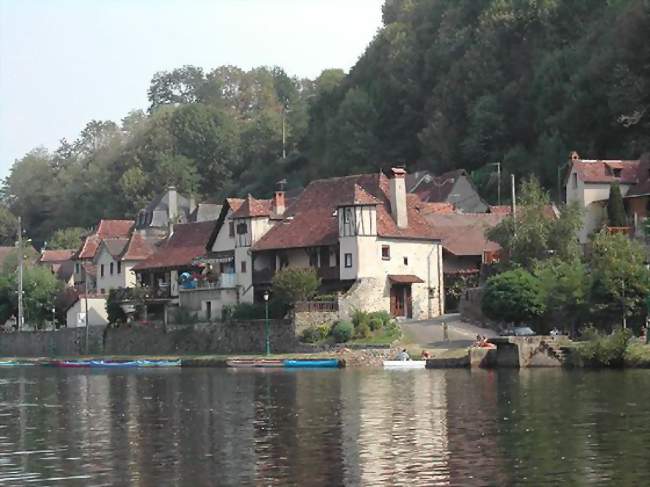


Inside the church is cold and damp and I’m unable to access the magnificent cloister which was rescued from becoming a pigsty in 1928. This one features a Christ in Majesty, holding the Book of Judgement. Less than 10 kilometres downstream is the wonderful medieval village of Carennac which boasts yet another 12 th century Romanesque tympanum on yet another church of Saint Pierre. It’s closed as this time of year, but I remember taking the guided tour around the restored halls, trying not to knock the antique furniture with my heavy backpack or laugh at the terrible translation of the English language handout. The next stop on my trip down memory lane is the 11 th century chateau of Castelnau-Bretenoux and the climb up to it is definitely easier with four wheels and an engine.

In one corner is a Madonna and child, covered with silver leaf and surrounding it are several reliquaries. Unfortunately, it’s only a recording but it makes pleasant background noise for my visit. I’m drawn inside the church by the sound of a choir singing. It’s one of several fine examples of Romanesque sculpture to be found in the region, with an Asian looking Christ, surrounded by angels and apostles. It’s market day and so finding a place to park is not easy, but I want to visit the church of Saint Pierre and reacquaint myself with the glorious tympanum which adorns the entrance portal. I start my tour, as I did 11 years ago, at the town of Beaulieu-sur-Dordogne, whose name I have never been able to pronounce correctly. Now, in the comfort of my motorhome, I can accomplish in one day what took a week back then. Then, I was using a kayak and a bicycle for transport and sleeping in a tent at various campsites along the river. I’m planning on visiting only a small part of the river, but it’s a section I know very well, as I first had the pleasure of exploring the area in 2004. It flows for 483 kilometres until it joins the Garonne River just north of Bordeaux, the two rivers merging to become the Gironde Estuary which spills into the Atlantic Ocean. The source of the River Dordogne lies somewhere in the Monts Dore, close to the cheese making town of St Nectaire.


 0 kommentar(er)
0 kommentar(er)
